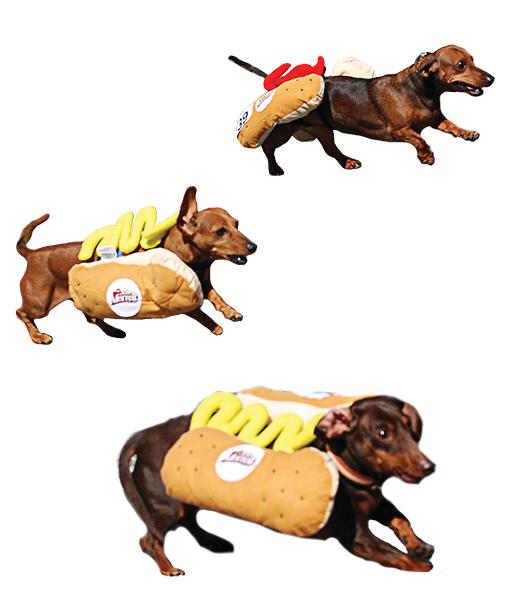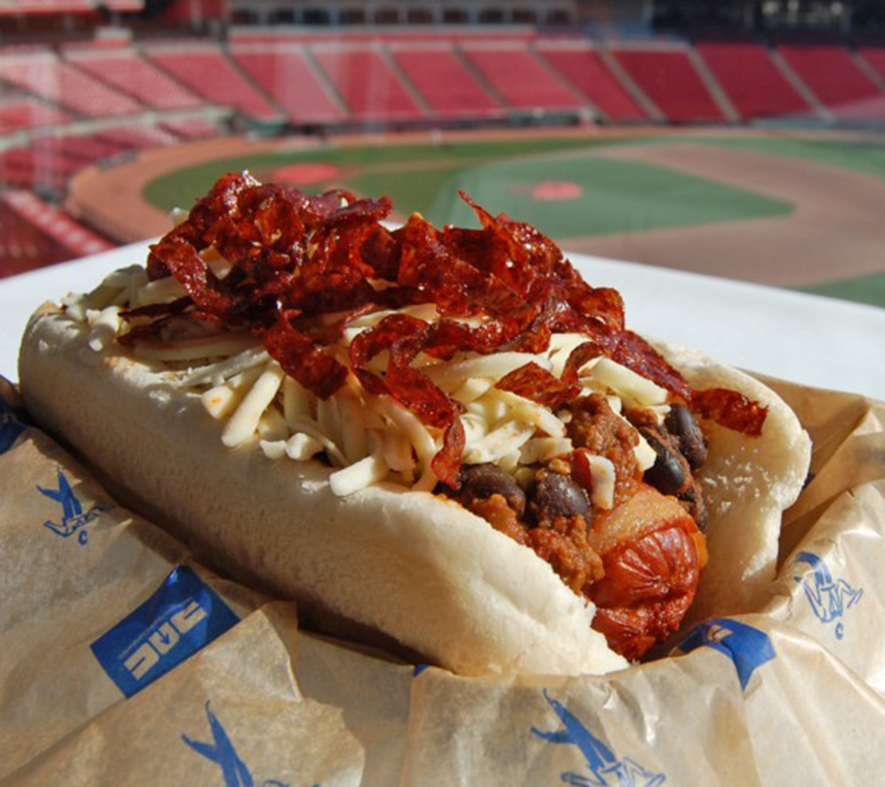For our July 2017 issue, we celebrate The Golden Age of Hot Dogs.
1830: German immigrants flock to Cincinnati and other U.S. cities, including former citizens of Frankfurt, a.k.a.“Frankfurters.”
1870: German sausage sellers ply Cincinnati’s streets and watering holes, including Weilert’s Café, where a man with a platter of meat is followed by a boy with bread, salt, and pepper.
1880s: Large meat producers such as Armour and Swift, in Chicago, send their casings on a round trip to Cincinnati for processing.
1883: The E. Kahn’s Sons Company begins selling meat on Central Avenue.
1893: Having found popularity at the Chicago World’s Fair, “dachshund sausages” (or wieners on buns) become standard fare at ballparks.
1900: Numerous Over-the-Rhine and downtown saloons offer “A Wienerwurst with Each Drink.”
1902: The Reds erect a new stadium, the Palace of the Fans. Dachshund sausages make their debut in the concession stand in “Rooters Row.”
1905: Industrial power choppers like those manufactured by Cincinnati Butchers Supply Company come into use, allowing hot dog makers to efficiently reduce large amounts of meat and fat into a slurry suitable for stuffing.
1922: Seeking a special sauce for his own version of a chili dog, Macedonian immigrant and hot dog stand proprietor Tom Kiradjieff develops a chili with the spice profile of his homeland. Cincinnati chili—and the cheese coney as we know it—is born.
1955: Kahn’s Wieners—then billed as “The Weiner the World Awaited”—begins a 15-year run of making baseball cards.

Photograph courtesy The Root Beer Stand
1957: The Root Beer Stand opens in Sharonville, selling chili dogs to hungry travelers and truckers.
1962: Mr. Gene’s Dog House opens.
1965: West End son Elmer Hensler teams up with Cincinnati “spice man” Alois Stadler and master sausage-maker George Nagel to start Queen City Sausage.
August 1979: Kahn’s “Great Meat Makes Great Wieners” ad campaign features actual shoppers being shown which cuts of meat go into their dogs, addressing consumer concerns about hot dog ingredients.
1992: Notoriously cheap Reds owner Marge Schott keeps the price of a hot dog at Riverfront Stadium at $1.
July 2006: Bronson Arroyo becomes a starting pitcher for the underdog Reds, eats a frank on the cover of this magazine.

Photograph by Leigh Taylor
2007: When it comes to sausage, size does matter: Bengals quarterback Carson Palmer appears in an (unintentionally?) lewd ad for John Morrell’s “Bigger than the Bun” smoked sausage.
Sept. 2007: First annual Running of the Wieners at Oktoberfest Zinzinnati.
2010: Senate unleashes thematic hot dogs in OTR, including the Korean, Trailer Park, Croque Madame, and Hello Kitty dog. Later dogs include the Una Noche Con Nick Lachey, the Lindsay Lohan, and the John Cranley.
Sept. 22, 2013: Joey Chestnut, the world’s top-ranked competitive eater, sets a world record and takes home his fourth straight title by eating 70 brats in 10 minutes at the Hillshire Farm Bratwurst Eating World Championship during Oktoberfest Zinzinnati.
2015: Food & Wine shows remarkable restraint when it calls Great American Ball Park’s “Meat Lover’s Hot Dog”—a deep-fried, bacon-wrapped Queen City Sausage topped with beef chili, fried salami, and shredded Jack cheese—“outrageous.”

Photograph courtesy The Cincinnati Reds
April 27, 2015: Senate issues an apology for the Bruce Jenner 2.0—“part hot dog, part taco”—added to the menu just hours before the Olympic gold medalist comes out as Caitlyn.
March 2017: Great American Ball Park’s new menu includes “gator,” “taco,” “Reuben,” and “nacho” dogs. You can also get a bockwurst with sauerkraut—or pineapple.





Facebook Comments